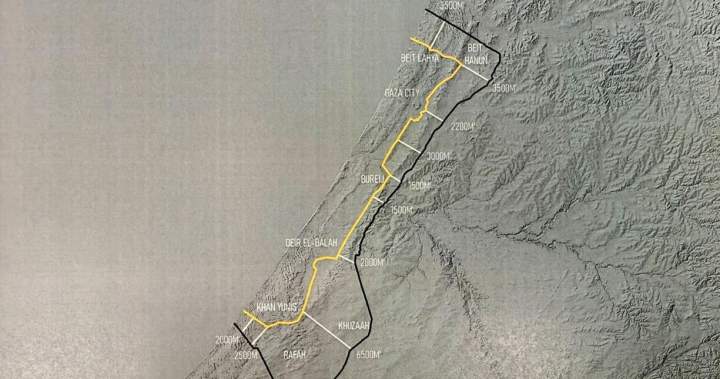In a potentially pivotal development for the Middle East, a U.S.-brokered ceasefire proposal could herald the release of hostages held in Gaza within days, offering the first significant breakthrough in months of devastating conflict. The initiative, announced by President Biden on Friday, presents the most comprehensive framework yet for ending hostilities that have claimed thousands of lives since October 7.
“After months of painstaking negotiations, we now have a roadmap to end this suffering and bring the hostages home,” Biden declared from the White House Rose Garden. The three-phase plan, crafted through intensive diplomatic efforts, outlines a progressive cessation of military operations alongside a structured hostage release program.
The framework arrives at a critical juncture, with humanitarian conditions in Gaza described by international aid organizations as catastrophic. An estimated 35,000 Palestinians have lost their lives during the conflict, while approximately 120 hostages remain in captivity after Hamas’ initial attack that killed 1,200 Israelis.
Israel’s Prime Minister Benjamin Netanyahu has called an emergency cabinet meeting to discuss the proposal, while Hamas representatives have indicated cautious openness to the terms. “We are reviewing the proposal with seriousness and responsibility,” stated a senior Hamas official speaking on condition of anonymity.
The first phase would establish a six-week ceasefire during which Hamas would release certain categories of hostages—including women, elderly, and wounded—in exchange for Palestinian prisoners. Military forces would withdraw from densely populated areas, allowing humanitarian aid to flow more freely into the besieged territory.
“This represents our best chance to alleviate suffering on both sides,” remarked U.S. Secretary of State Antony Blinken, who has shuttled between Middle East capitals throughout the crisis. The diplomatic breakthrough follows intensive involvement from Qatari and Egyptian mediators, whose persistence kept negotiations alive despite numerous setbacks.
The proposal addresses several contentious issues that previously stalled progress, including the ratio of Palestinian prisoners to be released for each hostage and guarantees of sustained humanitarian access. According to World News sources, the deal would facilitate the entry of 600 aid trucks daily into Gaza—a significant increase from current levels.
International reaction has been cautiously optimistic. European Union foreign policy chief Josep Borrell called it “a potential turning point,” while United Nations Secretary-General António Guterres urged all parties to “seize this opportunity for peace.”
Canadian Foreign Affairs Minister Mélanie Joly expressed support for the framework during a press conference covered by CO24 Politics. “Canada stands ready to provide whatever assistance is necessary to implement this agreement and support long-term stability in the region,” she stated.
Financial markets have responded positively to the news, with regional indices showing modest gains. Economic analysts interviewed by CO24 Business suggest that a successful ceasefire could begin addressing the estimated $30 billion in damage sustained by Gaza’s infrastructure since October.
Humanitarian organizations have emphasized the urgent need for implementation. “Every day without a ceasefire means more civilian casualties and deeper suffering,” said Dr. Catherine Russell, UNICEF Executive Director. “Children in Gaza cannot wait another day.”
For families of hostages, the proposal offers renewed hope after months of anguish. “We’ve been living in a nightmare since October,” said Rachel Goldberg, mother of Hersh Goldberg-Polin, who was taken from the Nova music festival. “This could finally bring our loved ones home.”
The path forward remains fraught with challenges. Hard-line elements within both Israeli and Hamas leadership have expressed reservations about compromise. Military analysts note that Israel’s stated objective of dismantling Hamas entirely appears modified under the proposal’s terms—a potential flashpoint for domestic opposition.
As diplomatic machinations continue behind closed doors, residents of Gaza face increasingly desperate conditions. According to CO24 News reporting, water systems operate at just 10% capacity, while 90% of health facilities have sustained damage or operate on minimal resources.
The success of this initiative may ultimately hinge on implementation details rather than broad principles. Previous ceasefires have collapsed amid accusations of violations and disagreements over interpretation.
As the world watches developments unfold in this troubled region, a question looms large: Can this diplomatic framework transcend the cycle of violence that has defined Israeli-Palestinian relations for generations, or will it merely provide temporary respite before hostilities resume?










